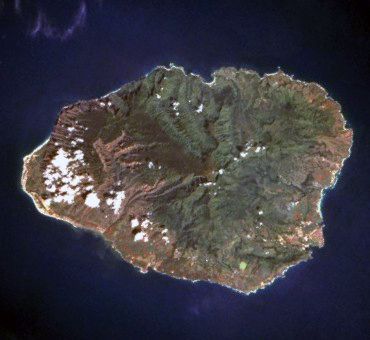
Moving to Kauai, Hawaii: A Comprehensive Relocation Guide
Considering moving to Kauai, Hawaii? This Garden Isle offers dramatic landscapes, laid-back atmosphere, and authentic island lifestyle. With approximately 73,000 residents in 2025, Kauai combines natural beauty with small-island character and Hawaii’s most scenic and rural island.
Demographic Profile to Consider If Moving to Kauai:
Kauai’s 2025 population is approximately 73,000 residents across Kauai County, Hawaii’s oldest and fourth-largest island. The median age is around 43 years, with local families, retirees, artists, and those seeking slower pace. The population is approximately 32% White, 31% Asian, 20% Two or More Races, 10% Native Hawaiian and Pacific Islander, 5% Hispanic. Kauai features dramatically varied landscapes from Na Pali Coast cliffs to Waimea Canyon, lush valleys, pristine beaches, and small towns including Lihue (county seat), Kapaa, Poipu, Princeville, and Hanalei. No building exceeds palm tree height by law. The island maintains the most rural, authentic Hawaii character with agriculture still significant. Kauai attracts those seeking natural beauty, rejecting urban life, and prioritizing quality of life over career advancement. The community values environmental preservation, Hawaiian culture, slow pace, and resisting overdevelopment. Find trusted local services for moving, living, and working in Kauai.Kauai Relocation Directory
Cost of Living to Consider If Moving to Kauai:
Kauai represents premium pricing for Hawaii. Median home values range from $800,000 to $1.3 million+ in 2025, with resort areas and beachfront commanding significantly more. The median household income is approximately $78,000. Rental properties average $2,500 to $4,200 monthly, with limited availability creating challenges. Hawaii has high excise tax (4.5%). Overall cost of living is extremely high—groceries cost 70-90% above mainland (highest in Hawaii due to shipping), gas is very expensive, and utilities costly. Kauai attracts retirees with resources, successful remote workers, and those prioritizing paradise over income. Housing costs create significant barriers with limited inventory and extreme demand. The small-island nature creates supply constraints. Many accept extreme costs as trade-off for living in Hawaii’s most beautiful island.
Economy and Job Market:
Kauai’s economy revolves entirely around tourism, agriculture, and government. Major employers include resort hotels in Poipu and Princeville, Kauai County government, Wilcox Medical Center, schools, and agricultural operations. Tourism dominates employment in hospitality and services. Seed corn agriculture continues. Coffee and tropical agriculture provide jobs. Many residents work multiple jobs. Remote work enables some mainland employment. Typical industries include tourism, agriculture, government, and services. The economy operates at island pace with seasonal tourism fluctuations. Career advancement opportunities are extremely limited. Many accept lower income as trade-off for island life. The small population creates limited job market.
Education:
Hawaii Department of Education operates Kauai schools including Kauai High School, Kapaa High School, Waimea High School, and schools throughout the island. School quality varies. Kauai Community College provides associate degrees and workforce training. The educational infrastructure serves the small-island population. Private schools serve some families. The remote nature creates unique educational challenges and opportunities with small school communities.
Recreation and Lifestyle:
Kauai offers unparalleled natural beauty including the Na Pali Coast (accessible by boat, helicopter, or challenging hike), Waimea Canyon (“Grand Canyon of the Pacific”), pristine beaches including Hanalei Bay, Poipu Beach, and Tunnels Beach, lush valleys, waterfalls, and hiking trails throughout. Residents enjoy water activities including surfing, snorkeling, diving, kayaking, and fishing year-round. The Kalalau Trail provides world-class challenging hiking. Helicopter tours showcase the island’s inaccessible interior. The lifestyle emphasizes outdoor recreation, environmental stewardship, slow pace, and authentic island living. The tropical climate enables perpetual outdoor activities. The community fiercely protects the island from overdevelopment, values Hawaiian culture and aina (land) stewardship, and embraces rural character. Living on Kauai means accepting extreme costs, very limited career options, frequent rain (especially north shore—Hanalei receives 200+ inches annually), occasional isolation, and prioritizing natural beauty and quality of life over income and conveniences. The small-island nature creates tight community but limited anonymity. Hurricane risk is real (Hurricane Iniki devastated Kauai in 1992). Residents choose Kauai for dramatic scenery unmatched anywhere.
Healthcare and Services:
Kauai residents access healthcare through Wilcox Medical Center in Lihue, Kauai Veterans Memorial Hospital, and clinics throughout the island. The healthcare infrastructure serves the small population though specialized care often requires Honolulu travel. Emergency services operate throughout the island with medical evacuation available for serious cases.
Transportation:
Lihue Airport (LIH) provides interisland flights and limited mainland service. Kauai Bus operates limited routes around the island. Most residents require personal vehicles. Gas is very expensive (highest in Hawaii). The island has no freeways—just two-lane highways circling most of the island (Na Pali Coast has no road). Typical drive times around the island are manageable though distances can be deceiving. Traffic is generally light except in Lihue and tourist areas.
Conclusion:
Moving to Kauai in 2025 offers Garden Isle living with Na Pali Coast drama, laid-back atmosphere, and authentic Hawaii. The island’s combination of unmatched natural beauty, rural character, and small-island ohana makes it ideal for nature lovers, retirees, and those seeking Hawaii’s most scenic escape where dramatic cliffs meet pristine beaches and extreme costs buy life in paradise’s most beautiful and authentic island where nature reigns supreme.

